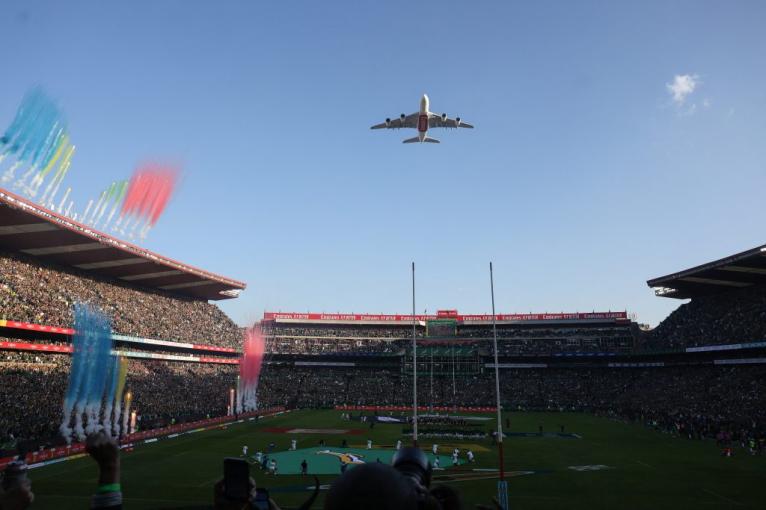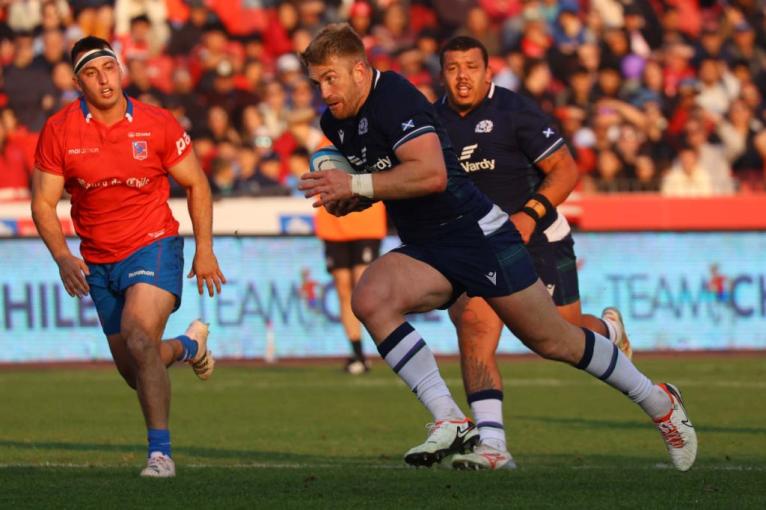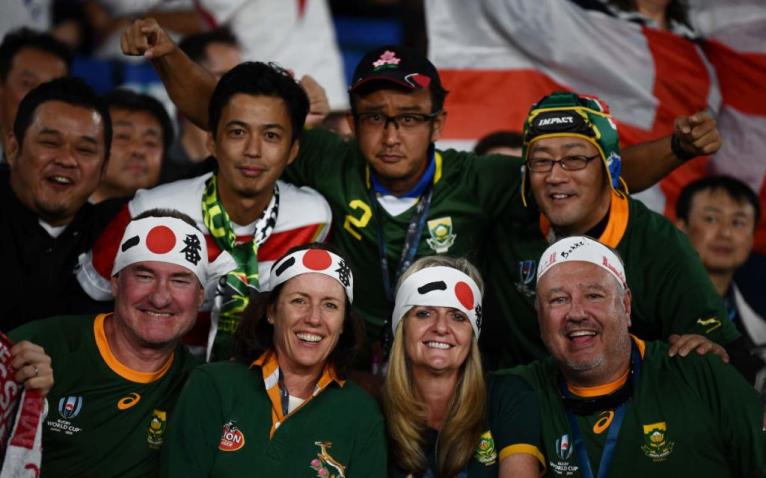As old as civilisation itself, whether in ancient Japan or old Portugal, sport has always been around. Maybe not in the form we recognise today, but humanity has a special knack of transforming any type of physical challenge into entertainment, and it goes back as far as 20,000 BC, with wrestling serving as an example.
Rome’s Colosseum and Circus Maximus drew massive crowds, offering a full experience to those who filled the many rows of those structures and embraced a vibrant show – much more than what was happening in the arena. The same happened in other parts of the globe and in different ages, with that early form of sport attracting fans and creating myths before modern times.
In the final days of the 19th century, sport finally became understood not only as entertainment, but a business, creating careers and jobs while also creating diehard fans who were crucial to the build-up.

Rugby, like football, basketball, volleyball and athletics, was part of that first block of sports to make serious endeavours to become part of the day-to-day routine, opening its grounds as a place of communion and leisure.
For better or worse, the professional era came late to rugby compared to most team sports, and it created several challenges, from the widening gap between certain nations to attracting new demographics.
At the same time, the real globalisation of the game has also created new hurdles for those who wish to follow their teams and be submerged in the emotions which can only be found inside a venue.
Tom McGurk’s words from an RTE Six Nations commercial sum up perfectly these new times.
If you are not at the Stoop or Loftus or in Clermont you can never recreate the smell of fear, the palpable rage of the crowd, the joy, oh the joy of the try.
“The professional era has turned what was once a casual three-month pilgrimage around the bars and the rugby grounds, into a furious six weeks of intensity, concentration and injuries.”
The sports scene has evolved and expanded to become a more ferocious commercial beast, creating massive structures to pack in more eyes, mouths, hearts and souls, while pushing for a cleaner environment, a stark contrast to what it was in the 20th century.
Prices have climbed to hardcore heights in some countries, raising concerns among lifelong fans who can’t exercise their routine of attending a game. Travel and accommodation can be a mixed bag and require deep pockets, and so the rugby pilgrimage is not for the faint of heart.
Has the gameday experience evolved? Or has it been damaged? Are fans happy with how things work? Is rugby still a sport for all fans, be they corporate guests or a young family? And are organisations looking after their supporters?
To answer these questions, we sat down with two different groups: authentic rugby pilgrims, and devoted club/nation organisers.
The ones who fall in love from the stands
We spoke to South African rugby writer and podcaster, Harry Jones; the Alcateia do Luxemburgo pack leader and Portuguese Phileas Fogg, Manuel Gaivão; and diehard Leinster and Ireland fan, Jay Long.
Jones delivered a powerful opening salvo about the virtues of rugby fandom.
“Rugby is a doctrine, a union, a theology, but also it is a place. A clubhouse and a scoreboard operator. A pitch which must be mowed and lined. A meat pie man, a fellow with a tuba, somebody’s mum heckling you as you tee the ball, a fresh-faced ballboy eager to be you one day.
“Going to the game is of the essence. Yes, you miss things on the stream, but you can always replay and study and rewind or meme later. If you are not at the Stoop or Loftus or in Clermont you can never recreate the smell of fear, the palpable rage of the crowd, the joy, oh the joy of the try, the nerves awaiting a TMO without knowing why he will do what he will do “to” you, the chats and hugs you share with strangers who become a lifeline for those two hours, the difference in the walk to Eden Park or Kings Park, the pace and rhythm of a World Cup in massive France or one in tiny New Zealand. I will always go to rugby.”

Despite this rich sensory cocktail, has rugby become unaffordable to parts of its key fanbase?
“It varies game to game,” Long considers. “I think we are pricing some fans (me included) to a point where you have to pick your battles game-wise. I and many like me gravitate towards the big days since I don’t have a season ticket anymore (it makes no sense lifestyle-wise right now). I would say the atmosphere and experience of the ‘non-big days’ suffer for that a little. This isn’t only in rugby though.”
Jones’ take is slightly different, having spent much of the Rugby World Cup 2023 period in France, and been awestruck by the four quarter-finals.
“A rugby match between rivals was always beautiful and is beautiful still and always will be beautiful. The need for a wider base of fans for those matches to exist within the architecture of a cup or tournament is deeper now. I grew up on the foreverness of Boks v All Blacks or England. No championship needed to grace it with awe.
Rugby is better as a sport than ever before. But we have a weird way of shooting ourselves in the foot.
“I do think having a junior row or standing-room-only ticket is smart, but I have no problem with the ticket prices rising commensurate with the skill, market and hype; this is life. We get more. We pay more. The quarter-finals are just one example, but I would point also to South Africa v New Zealand in Cape Town this year: not just the supreme athletes, fitness and commitment to hard, clean rugby collisions and competition. The stadium itself, the marching bands, the dancing, the flyover, the smoke, the fire, the music, the passion; replayed millions of times on social media, igniting a nation. Yes, we get our money’s worth: pay the piper.”
A game shouldn’t just be about the 30 combatants on the pitch – it should be much more, right? Gaivão believes the all-important matchday experience has improved, but more could be done across rugby.
“The Americans are perfect in that sense, even when the game is going on,” says Gaivão. “They are 200% focused on keeping everyone excited. There are tricks to that, but they have found a way to make any big sports event desirable.
“For rugby fans, I think we must nurture some post-game type of events like the French do. I remember going to a Montpellier game in 2008, and after the match fans were allowed to mingle amongst players or share a cheese platter while talking about the game in the adjacent areas to the stadium. It makes a difference when we talk about creating a more attractive product.
“Things have improved, but only in certain countries or regions. The venues are more accessible, comfortable and easy for fans to move around. But I think there’s an important aspect we should talk about: going to a game as a fan and as a spectator. The latter goes to a game because they like sports and just want to enjoy a good show. The former steps inside the arena are already emotionally involved, and the experience might change depending on how things go. In my case, if I go exclusively just as a spectator, I will be more demanding. I will be more focused on the small details and everything that surrounds the pitch. It’s something that has consistently gotten more significant since the dawn of the pro era.”
Jones concludes: “Rugby is better as a sport than ever before. But we have a weird way of shooting ourselves in the foot. We oddly tweak the law, often right after we find a groove. We tend to obsess over the reluctant fan rather than reward the lifelong fan who has given more. We should listen more to the forever fan than the ‘restaurant review’ man who does not love the sport.”
The ones who bridge the love from the pitch to the stands
As the (digital) get-together of international fans ends, we move to the next table to talk with people involved in the daily club and union operations. Virginie Moussard, head of sponsoring for Pro D2 side AS Béziers-Hérault, and Chile Rugby Union president, Cristian Rudloff.
Moussard explains how her club has adapted to suit the needs of the modern supporter.
“There is a need to offer a spectacle people come to see with family and friends, there is television, journalists, partners, everything. As soon as the stadium doors open, the staff has everything controlled and organised, from refreshments to games for children. The supporter must feel their best to retain their loyalty throughout the year.”
Chile had tremendous national resonance in July, with the Scotland match attracting 25,000 fans to the Estadio Nacional de Santiago, while 13,000 watched Los Condores in Viña del Mar, a venue two hours from the capital.

“We have been implementing ideas which can entice young fans to come, expanding our fanbase to a much larger number,” Rudloff says. “For example, we try to do youth tournaments before the main match, allowing not only for those young players to come, but also their families. Those fans have an extensive list of activities to pick from, be it food trucks, live music concerts or mini-games. We want them to come back, so it is our job to find ways to entertain and make them happy.”
Has the ticket pricing played a key role in that strategy?
“We haven’t lost sleep about that, as our total focus has been on welcoming the maximum number of fans. We have made special prices for families and large groups, and we first want to create a nationwide rugby community before thinking about the ticketing.”
As for France, the average attendance at a Pro D2 game has grown to 7,000, with the Top 14 jumping to an even higher number.
“In our club, tickets go for around 25€ or 30€,” Moussard says. “It can be expensive if you add food and drink to that. On the other hand, children under 12 don’t pay entry, there are sometimes offers of €10 per match or packages for three matches with a lower price. Despite everything, rugby in France remains one of the most accessible sports to watch with the family.”
Having said farewell to our guests, is it possible to reach a conclusion, or have we created more questions? Fans and organisers have sought to build a bridge to link the two worlds, but to achieve that goal a serious and honest debate has to happen between the two.
Before I write the last full stop, I would like to share a story which perfectly sums up the powerful allure sport and rugby possess. On my way to the Nice Côte d’Azur Airport last September, I met a Japanese tourist who, like me, wandered in the wee hours of the night waiting for his flight.

In what ended up being an interesting talk, he revealed he went to see the Wales v Portugal game, played just a few hours before. It seemed an odd choice. Yet four years earlier, the man had purchased tickets to the Italy-New Zealand pool match in his homeland, which fell victim to Typhoon Hagibis.
“It was always a dream of mine to watch a Rugby World Cup game, and I was deeply unlucky the only game I had bought tickets for was cancelled. So, I waited patiently for 2023, and when the tickets went live, I bought one for Wales v Portugal. I decided to take one week of vacation and travel to Spain and France, packed my bags and just embarked on this journey. I loved the environment; the Welsh and Portuguese fans were crazy and never stopped pushing for their teams. I was welcomed like I was one of them, and those are memories I won’t ever forget.”
Why Wales v Portugal? There was no reason. The Japanese man simply wanted to experience what was like to be in a Rugby World Cup match. That was it.
We said our goodbyes and went back to our journeys. We didn’t exchange names or contact details. However, his story taught me a lesson: rugby fans have the power to make anything and everything possible.


For once a nice rugby article instead of hostile bs
Best article ever